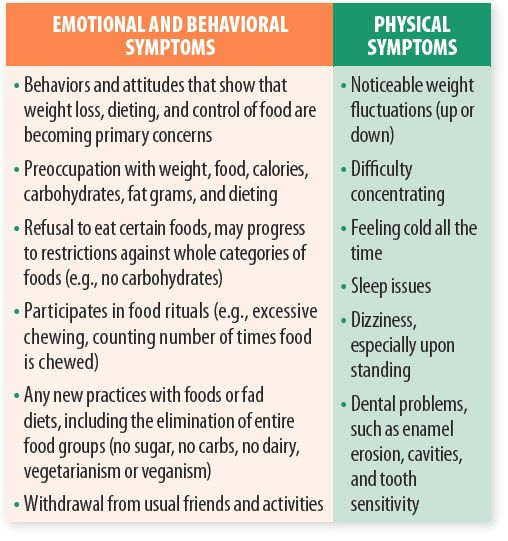Can Adults Have Eating Disorders?
For most people, when the term “eating disorders” is brought up, it often triggers an image of a young female, perhaps a gymnast or cheerleader and their struggles as a teen. While this picture IS an accurate representation of a person with an eating disorder, it only validates a fraction of the population that will battle against eating disorders in their lifetimes.
Backing up, let’s first review what actually constitutes an eating disorder. Simply put, eating disorders are serious conditions that affect (or are affected by) eating behaviors and can wreak havoc on your health, emotions, and ability to function throughout all areas of life. The majority of eating disorders center around an unhealthy fixation on weight, body shape, and food, and this in turn helps to fuel inappropriate and even dangerous eating and exercise practices. Struggles with eating disorders impact nearly all systems in the body and can lead to irreversible damage to the heart, digestive system, bones, teeth, and mouth. Eating disorders also have the highest mortality rate of any mental illness.
The National Eating Disorders Association (NEDA) describes eating disorders as “serious but treatable mental and physical illnesses that can affect people of all genders, ages, races, religions, ethnicities, sexual orientations, body shapes and weights.” There are several different kinds of eating disorders, most commonly discussed include anorexia nervosa (characterized by significant weight loss and calorie restriction, negative impacts on physiological health, and an intense fear of weight gain or becoming fat, although underweight), bulimia nervosa (characterized by atypically large amounts of food consumed in a short time period followed by compensatory behaviors such as purging, excessive exercise or laxative use, while feeling loss of control throughout the behavior cycle), binge eating disorder (marked by food intake practices similar to those described in bulimia, but without the accompanying compensatory behavior), and many other diagnoses.
No single population group is completely immune to eating disorders, contrary to previous beliefs. Nearly every population group is affected, including African Americans, Asians, Latinos, and other minority groups. Men also suffer with eating disorders. In fact, males represent at least 1 out of every 10 people with an eating disorder. Yes, teens do suffer from eating disorders but so do adults, mothers, fathers, and grandparents. Nearly 30 million Americans have an eating disorder. Shocking…right? Even more shocking is that an estimated 13% of women over age 50 are currently living with an eating disorder. This means that you (or someone you know) may be struggling with an eating disorder.
Eating disorders are complex and the risk factors contributing to the presence of one of these conditions likely stems from a wide range of biological, psychological, and sociocultural issues. The following list, summarized by NEDA, outlines some (but not nearly all) of the common emotional and physical symptoms that may be present in a person battling an eating disorder. Take note and see if any of these symptoms may ring true. Biological issues include genetic components (having a close relative with an eating disorder) or a history of dieting, whereas psychological risk factors include perfectionistic thinking or body image dissatisfaction. Sociocultural factors include weight stigma, being teased or bullied, and the concept of socially-defined “ideal body” type.
Treatment of and recovery from eating disorders is possible, but it can be challenging to know where to look for help. Nicole Wavra, Registered Dietitian and co-owner of Relate Nutrition (a nutrition practice focusing on treatment of eating disorders in clients of all ages) advises that “If you are concerned about an eating disorder in yourself or someone you love, there are many resources out there to help. A great place to start is the NEDA website (https://www.nationaleatingdisorders.org). Here you can find warning signs, a screening tool, and a database of treatment providers across the country.” Wavra also notes that “It is important to find a multidisciplinary team that includes a physician, therapist, registered dietitian, and possibly a psychiatrist. Even if there are not providers located close to you, many (providers) are now offering telehealth appointments.” No matter your age, the earlier that an eating disorder is detected, the greater the chance is for recovery and a multifunctional team can help you along this journey for recovery.

—Kristen N. Smith, PhD, RDN
The post Can Adults Have Eating Disorders? appeared first on University Health News.


